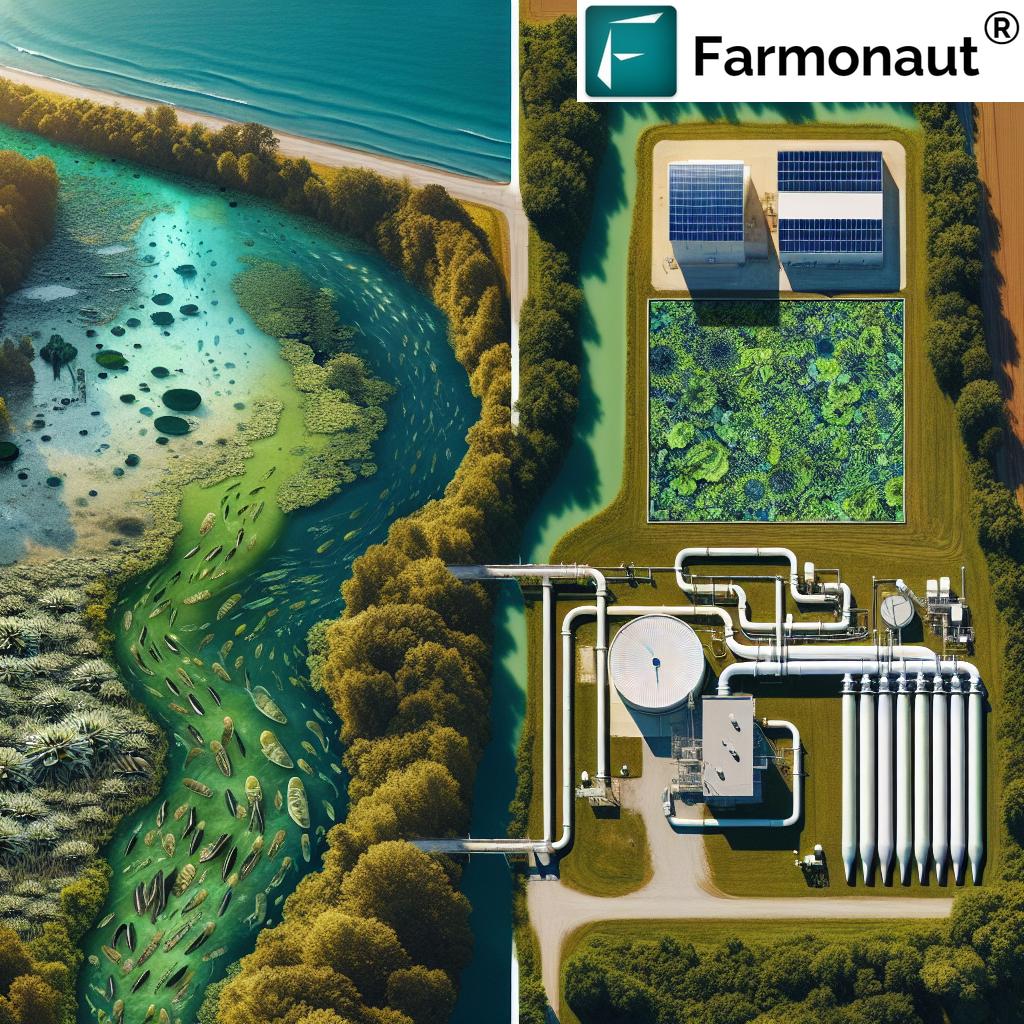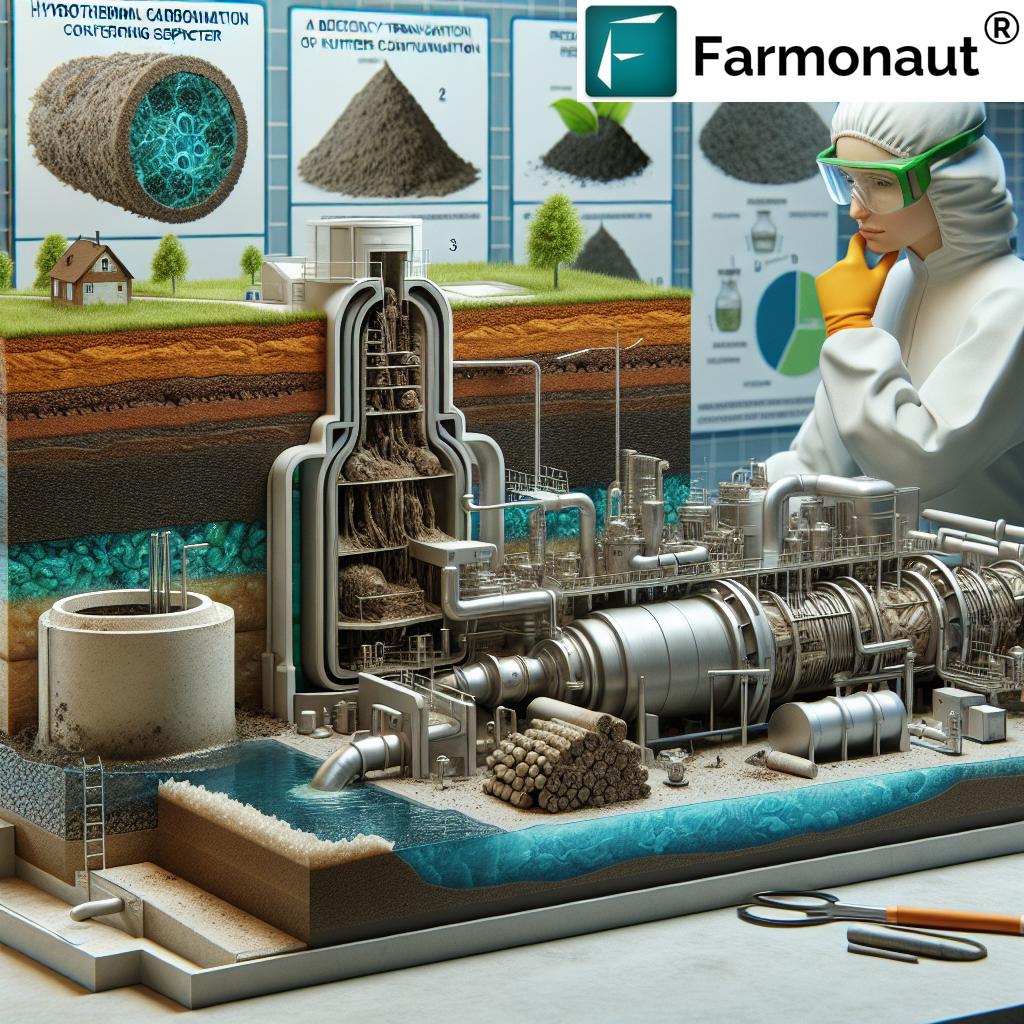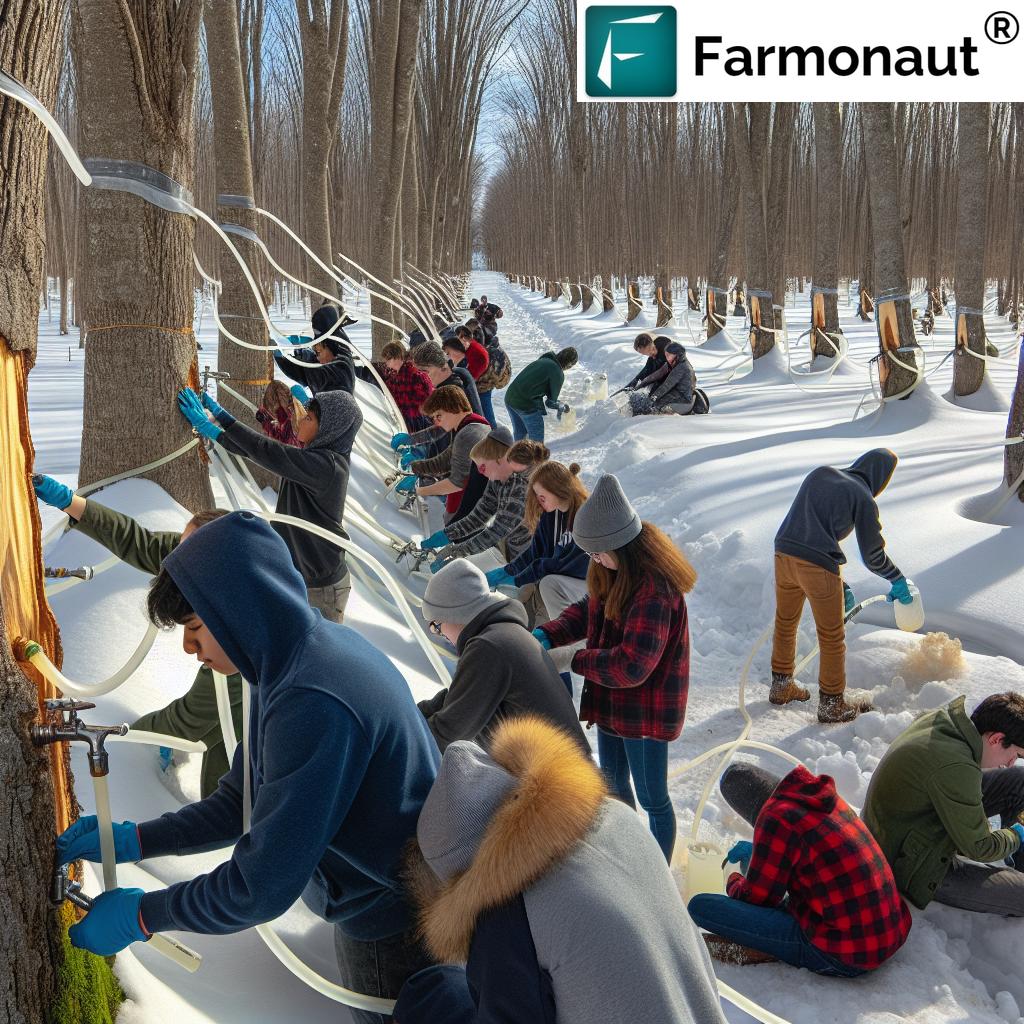Revolutionizing Rural Wastewater: How Athens County’s Septic Waste Could Boost Economy and Reduce Nutrient Pollution
“Athens County’s septic waste conversion could potentially reduce nutrient pollution in waterways by up to 30%, improving local water quality.”
In the heart of rural Ohio, a groundbreaking research project is set to transform the way we think about wastewater management and sustainable agriculture. We’re excited to delve into this innovative study that could revolutionize septic system management and pave the way for a more environmentally friendly future in Athens County and beyond.
The Septic Waste Revolution: A Game-Changer for Rural Communities
Athens County, Ohio, where over 43% of residents live in rural areas, is at the forefront of a potential revolution in rural wastewater treatment. A team of researchers, led by Professor Sarah Davis from Ohio University’s Voinovich School of Leadership and Public Service, has uncovered a promising solution to reduce nutrient pollution in local waterways while simultaneously boosting the local economy.
The crux of this groundbreaking research lies in converting septic sewage waste into fertilizer through an innovative process called hydrothermal carbonization. This approach not only addresses the challenges of septic waste management but also offers a sustainable alternative to synthetic fertilizers.

Understanding Septic Systems and Their Environmental Impact
Before we dive deeper into the innovative solution, let’s first understand the current state of septic systems in Athens County and their environmental implications:
- More than one in five households in the U.S. depend on individual or small community cluster septic systems.
- In Athens County, septic haulers currently take sludge pumped from individual tanks to the Athens Wastewater Treatment plant for treatment before sending it to the Rumpke landfill in Nelsonville.
- The Ohio Department of Health estimated that in 2012, almost one-third of all home sewage treatment systems across the state were experiencing some degree of failure.
- Failing septic systems not only pollute waterways with pathogens like E. coli but also flood them with excess nitrogen and phosphorus.
These facts highlight the urgent need for innovative solutions in rural wastewater treatment. The proposed hydrothermal carbonization process could be the answer we’ve been looking for.
The Hydrothermal Carbonization Process: Turning Waste into Gold
The study proposes treating septic sewage with hot compressed water in a process called hydrothermal carbonization. This method can also be used for food and yard waste, making it a versatile solution for various types of organic waste. The final product of this process is hydrochar, a carbon-rich and nutrient-dense substance that can be used as a soil amendment.
Here’s how the hydrothermal carbonization process works:
- Septic waste is collected from individual tanks.
- The waste is subjected to hot compressed water treatment.
- This process breaks down the organic matter and concentrates nutrients.
- The result is hydrochar, a nutrient-rich substance suitable for use as fertilizer.
This innovative approach to septic waste recycling presents a win-win situation for both the environment and the local economy.
Environmental Benefits of Converting Sewage to Fertilizer
The potential environmental benefits of this innovative approach to septic waste management are significant:
- Nutrient Pollution Reduction: By converting septic waste into fertilizer, we can significantly reduce the amount of excess nutrients entering local waterways.
- Greenhouse Gas Reduction: The process could reduce greenhouse gas emissions by 64% per unit of fertilizer produced, compared to the production of synthetic fertilizers.
- Water Quality Improvement: Proper management of septic waste could help improve water quality in local creeks and rivers, making them safer for both aquatic life and human activities.
- Sustainable Resource Management: This approach promotes a circular economy by turning waste into a valuable resource, reducing the need for synthetic fertilizers.
“Hydrothermal carbonization of septic waste could decrease greenhouse gas emissions from synthetic fertilizer manufacturing by approximately 25% in rural areas.”
Economic Implications: Boosting the Local Economy
The potential economic benefits of this innovative approach to septic waste management are equally impressive:
- Cost Savings for Farmers: Using fertilizer produced from septic waste could save farmers money, as the price of synthetic fertilizers has more than tripled since the 1990s.
- Job Creation: Implementing this new waste management system could create new jobs in the local community, from waste collection to processing and distribution of the final product.
- Reduced Maintenance Costs: The study suggests that profits from the sale of hydrochar could subsidize the work of septic haulers, potentially reducing costs for homeowners.
- Value of Nutrients: The research estimated that the nitrogen and phosphorus from Athens County septic systems was worth $1.8 million at 2022 market prices.
These economic benefits demonstrate how innovative approaches to waste management can not only solve environmental issues but also contribute to local economic growth.

Pilot Projects: Bringing the Concept to Life
To prove the viability of this innovative process, the research team has proposed two pilot project ideas:
- Centralized Facility: This option involves creating a facility at an existing wastewater treatment plant where septic haulers can discharge their trucks into holding tanks. The contents would then undergo hydrothermal carbonization to separate nutrients from the sludge.
- Mobile Unit: This option proposes a mobile processing unit, similar to a septic hauler truck. The truck would pump the septic tank and process the waste immediately, creating hydrochar on-site.
These pilot projects could pave the way for wider implementation of this revolutionary waste management system.
Comparative Analysis: Traditional vs. Hydrothermal Carbonization (HTC) Septic Waste Management
| Aspect | Traditional Method | HTC Process |
|---|---|---|
| Process Overview | Pump and dump in landfill or treatment plant | Convert waste to nutrient-rich hydrochar |
| Environmental Impact | High nutrient pollution, high GHG emissions | Reduced nutrient pollution, 64% less GHG emissions |
| Economic Benefits | Limited; high costs for homeowners | Potential cost savings, new revenue streams |
| Water Quality Improvement | Minimal; continued pollution risks | Significant reduction in waterway pollutants |
| Scalability Potential | Limited by landfill capacity | Highly scalable; adaptable to various regions |
| Fertilizer Production | None | Estimated $1.8 million worth annually in Athens County |
The Broader Impact: From Local Creeks to the Gulf of Mexico
The potential impact of this innovative approach to septic waste management extends far beyond Athens County. By addressing nutrient pollution at its source, we can potentially mitigate issues that affect larger water bodies downstream:
- Local Creeks and Rivers: Immediate improvement in water quality of local waterways.
- Ohio River: Reduced risk of harmful algal blooms, like the one that affected 700 miles of the river in 2015.
- Mississippi River: Decreased nutrient load flowing into the Mississippi River system.
- Gulf of Mexico: Potential reduction in the size of the annual “dead zone” caused by excess nutrients.
This scalable model for sustainable waste management and agricultural practices could have far-reaching effects on water quality and ecosystem health across the country.
Challenges and Considerations
While the potential benefits of this innovative approach are significant, there are several challenges and considerations to keep in mind:
- Infrastructure Development: Implementing this system would require significant investment in new infrastructure, whether centralized facilities or mobile units.
- Regulatory Approval: The use of processed septic waste as fertilizer would need to meet strict regulatory standards to ensure safety.
- Public Perception: There may be initial hesitation from farmers or consumers about using fertilizer derived from septic waste.
- Technical Expertise: Operating and maintaining the hydrothermal carbonization systems would require specialized knowledge and training.
Addressing these challenges will be crucial for the successful implementation and scaling of this innovative waste management approach.
Explore Farmonaut’s Satellite API
The Role of Technology in Sustainable Agriculture
As we explore innovative solutions like converting septic waste to fertilizer, it’s important to recognize the broader role of technology in promoting sustainable agriculture. Companies like Farmonaut are at the forefront of this technological revolution, offering advanced satellite-based farm management solutions that complement efforts to reduce nutrient pollution and promote sustainable farming practices.
Farmonaut’s platform provides valuable services such as:
- Real-time crop health monitoring
- AI-based advisory systems
- Blockchain-based traceability
- Resource management tools
These technologies can help farmers optimize their use of resources, including fertilizers derived from septic waste, further enhancing the environmental and economic benefits of innovative waste management approaches.
Check out Farmonaut’s API Developer Docs
Future Prospects and Research Directions
The innovative approach to septic waste management proposed by Professor Davis and her team opens up exciting possibilities for future research and development:
- Optimization of the Hydrothermal Carbonization Process: Further research could focus on improving the efficiency and yield of the HTC process for septic waste.
- Integration with Other Waste Streams: Exploring the potential to combine septic waste with other organic waste streams for more efficient processing.
- Long-term Soil Health Studies: Investigating the long-term effects of using hydrochar derived from septic waste on soil health and crop productivity.
- Economic Modeling: Developing detailed economic models to assess the full potential of this approach for rural economies.
- Policy Recommendations: Formulating policy recommendations to support the implementation of this innovative waste management system at a larger scale.
These research directions could further enhance our understanding of the potential of septic waste recycling and its role in creating more sustainable and resilient rural communities.
Conclusion: A Sustainable Future for Rural Wastewater Management
The groundbreaking research on converting septic waste into fertilizer in Athens County, Ohio, represents a significant step towards more sustainable and economically viable rural wastewater management. By addressing the challenges of nutrient pollution, greenhouse gas emissions, and the rising costs of synthetic fertilizers, this innovative approach offers a promising solution for rural communities across the country.
As we continue to explore and refine this technology, it’s clear that the future of rural wastewater treatment lies in circular economy approaches that turn waste into valuable resources. With the potential to improve water quality, boost local economies, and contribute to more sustainable agricultural practices, this research opens up exciting possibilities for rural development and environmental conservation.
The journey towards revolutionizing rural wastewater management is just beginning, and we look forward to seeing how this innovative approach unfolds and impacts communities in Athens County and beyond.
FAQ Section
Q: What is hydrothermal carbonization?
A: Hydrothermal carbonization is a process that uses hot compressed water to break down organic matter, such as septic waste, into a carbon-rich, nutrient-dense substance called hydrochar, which can be used as a soil amendment or fertilizer.
Q: How does converting septic waste to fertilizer help the environment?
A: This process reduces nutrient pollution in waterways, decreases greenhouse gas emissions associated with synthetic fertilizer production, and improves overall water quality by properly managing septic waste.
Q: What are the economic benefits of this approach?
A: The economic benefits include potential cost savings for farmers on fertilizers, job creation in waste management and processing, and reduced maintenance costs for homeowners with septic systems.
Q: Is fertilizer made from septic waste safe to use?
A: While the research shows promise, any fertilizer derived from septic waste would need to meet strict regulatory standards to ensure safety before being approved for use.
Q: How could this technology be implemented on a larger scale?
A: Implementation could involve either centralized facilities at existing wastewater treatment plants or mobile units that process waste on-site. Scaling up would require significant infrastructure investment and regulatory approval.
















